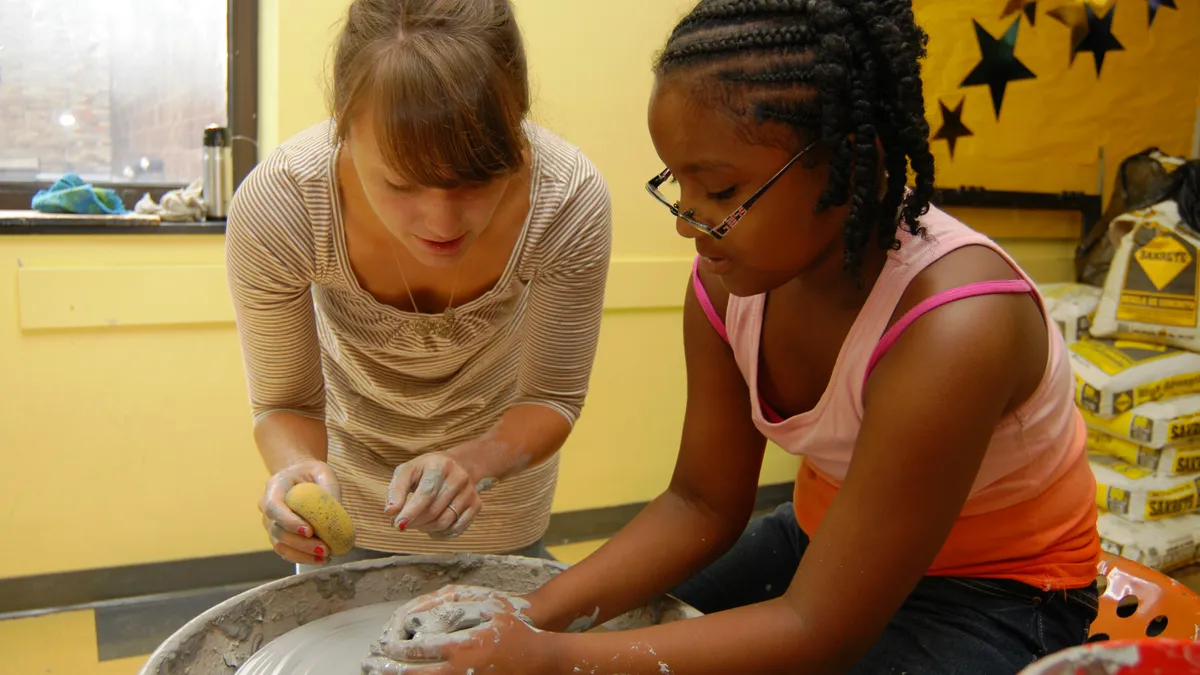About 2,000 elementary and middle school students in Pittsburgh Public Schools are getting 90 minutes of reading and 90 minutes of math instruction every morning. But they don’t call it school. They call it camp.
And even though these students’ afternoons are spent in enrichment activities like fencing, West African dance, and filmmaking, some still say their favorite parts of the district’s Summer Dreamers Academy is the reading or the math classes in the morning. That’s a point of pride for Christine Cray, director of student services reform.
District experts plan a 27-day curriculum in reading and math, designed to help students keep their skills sharp over the summer, but everyone involved in the Summer Dreamers Academy is clear that it needs to feel different from school. Kids play games to learn new math concepts and use theater to hone their reading skills. Even in the afternoon, literacy education continues.
“We use enrichment to further academic goals,” Cray said. “Along with teaching kids the fundamentals of judo or ceramics, they also have an authentic writing project that’s incorporated into part of the activity.”
In the bicycle safety and maintenance concentration, for example, students write public service announcements about bike safety and they send letters to public officials advocating for more bike lanes.
“We deliberately design camp to be focused on high energy and high excitement,” said James Doyle, coordinator of out of school time.
Pittsburgh Public Schools is seen as a leader in the summer learning space. Its free Summer Dreamers Academy won the New York Life 2015 Excellence in Summer Learning Award. According to Sarah Pitcock, executive director of the National Summer Learning Association, many other school districts around the country have adopted the same model, offering students rigorous academics in the morning, followed by community-based enrichment opportunities in the afternoon.
In general, attention on summer learning loss has grown rapidly in the last decade. The NSLA has tracked media coverage of the issue, finding that in 2007, there were close to 1,000 summer learning stories in traditional media. In 2015 that number ballooned to almost 30,000 stories, reflecting a greater focus on the issue in schools.
Researchers have found that all students, regardless of income level, lose math skills over the summer, but when it comes to reading, a clear gap appears. Kids from middle and higher income families continue to build on their skills during the summer break while their peers from lower income families lose an average of two to three months of reading skills.
“People think the teacher makes that up in the fall,” Pitcock said. “That’s not true. We have research that shows the loss builds up year over year. By the end of fifth grade, they’re as much as two-and-a-half years behind.”
In Chicago the 2013 Summer of Learning, which brought together more than 100 youth-serving organizations to advertise their summer learning opportunities, has grown into a massive Chicago City of Learning initiative. Students can identify multiple activities that have themes in common, organized into “playlists” or earn badges to track their accomplishments. Boston and Providence are two cities that have begun offering students academic credit for badges earned outside of school.
Some cities and school districts have poured thousands of dollars per student into summer learning initiatives to offer free, high-quality learning opportunities between academic years. There are, however, much cheaper options that can still have an impact. Oregon is set to expand an open library initiative that costs less than $10 per student for the entire summer. Children can walk into open school libraries staffed with volunteers, read books with adults, get free meals, and practice reading.
But the wave of the future, Pitcock says, is transitioning from summer reading to summer learning in libraries. And summer programs like those in Chicago, Boston, and Providence, are leading the way on expanding competency-based learning opportunities in community settings. Increasingly, students are being taught that learning can happen anywhere, and perhaps most importantly, it can be fun.





















